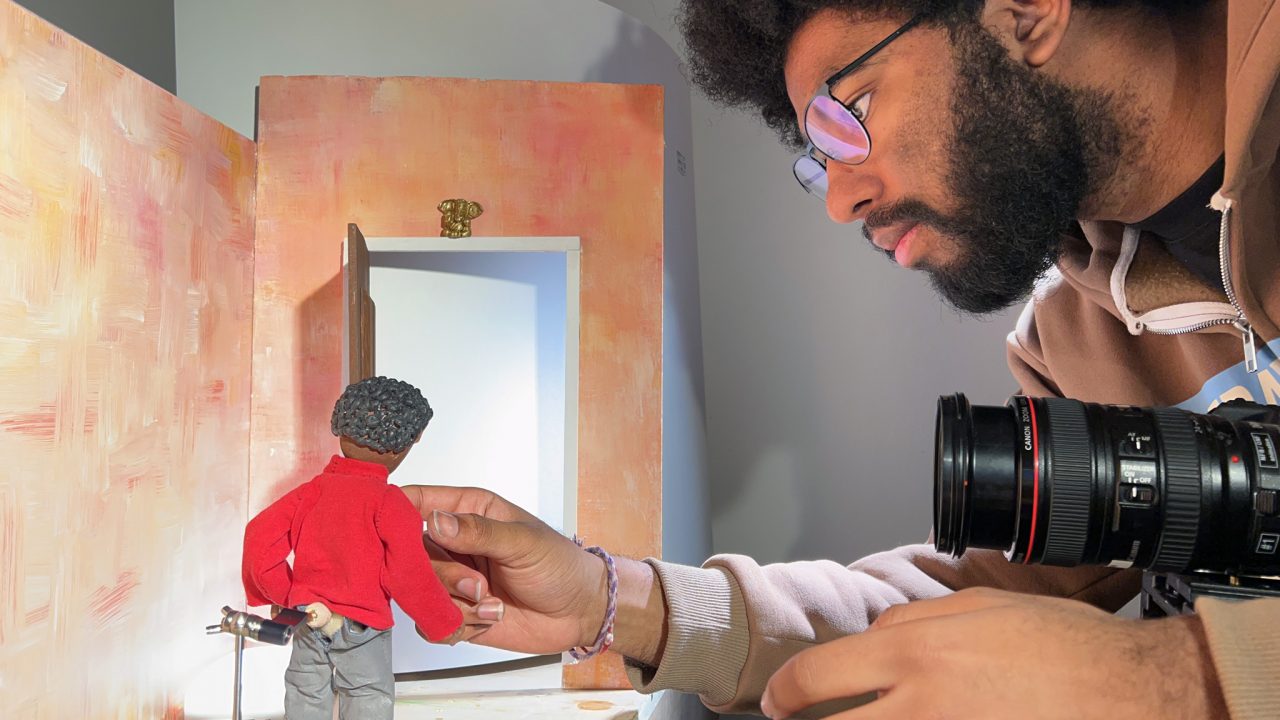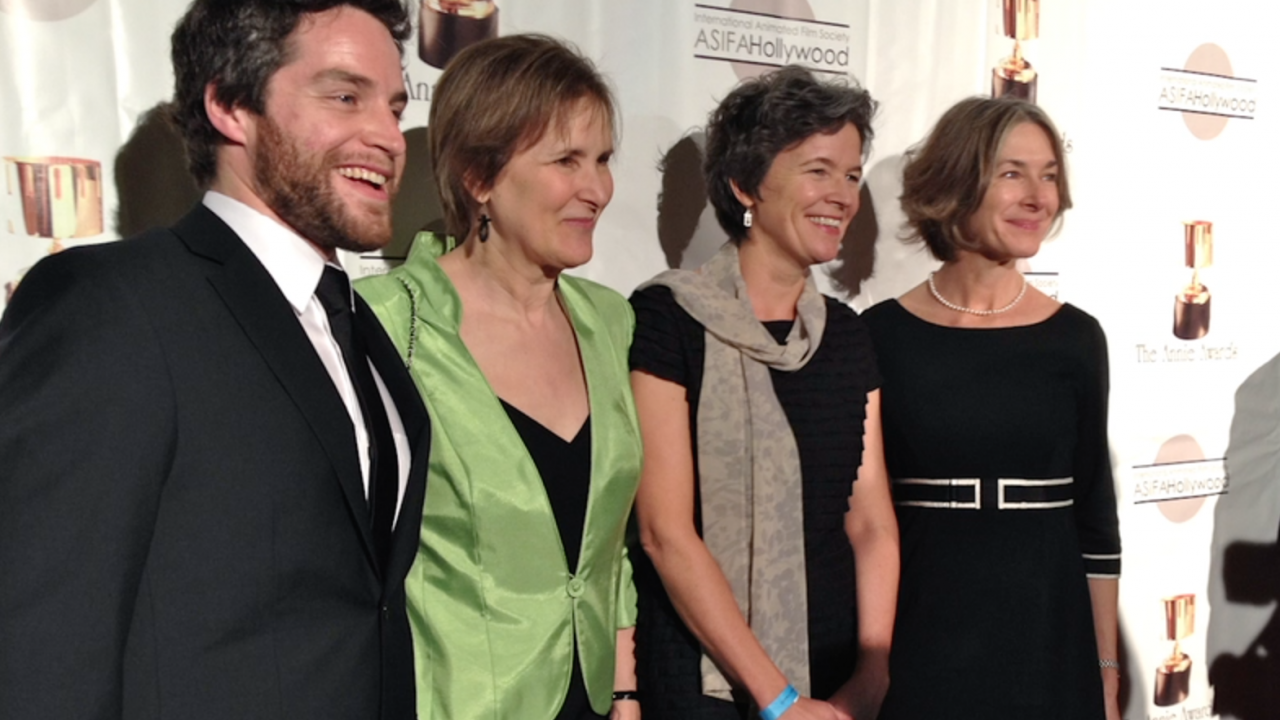Q&A with Michael Fukushima, Animation Producer (Part 1)

A lot of readers have been asking about the animation department here at the NFB, how it’s run, what’s involved and, of course, do we hire interns? So last week I sat down with Animation Producer Michael Fukushima for a quick Q&A. However, as I was to learn, nothing in animation is ever really “quick,” so I’ve split the post into three parts. I’ll publish the second part on Friday.
JM: What is your title?
MF: I’m a producer in the animation studio in the English program at the National Film Board of Canada.
JM: What does your job entail?
MF: In the animation department at the NFB, the producer does everything the director doesn’t. The only real difference between an NFB producer and a private producer is that private producers spends about 75% of their time looking for money. I spend maybe 30% of my time looking for money – petitioning the studio or petitioning the program. I get to spend more time having creative fun with the directors, but I still have to manage the project.
I also represent the NFB in any creative sessions.
JM: But at the NFB, isn’t all the financing already available? Where exactly do you have to look for, or petition for, financing?
MF: We have to look for money both within and outside of the NFB. We’re often looking for co-producers for our projects, so I’m out wooing them. Other times, I’m going to funds (not Canadian funds) and sources to see if we can find sponsorship or financial buy-ins that don’t compromise NFB rules and financing.
JM: What attracted you to the field of animation?
MF: The flip response is I can’t do anything else.
But really, it’s the classic backdoor story. I was training to be an engineer and I realized it was not the life for me. So I didn’t finish.
The brother of a friend was studying animation. I always loved drawing and cartoons and I was a huge fan of the NFB. I was a bit of a ham, loved theatre, dance, movement. I figured, if I can’t be a geeky science tech guy, maybe I’ll pursue the dark side and see if that’s interesting. So I went to Sheridan College [Oakville, ON] and have not been able to do anything but animation since.
I completed the Classical Animation Program at Sheridan. This was their pre-degree days, when it was a community college program. Now it’s a 4 year bachelor’s degree.
JM: How did you get your first job? What was it?
MF: When I graduated from college, I started up a small boutique studio with friends who graduated at the same time. There were three of us, and as it turned out I was the one who was most suited to getting clients, finding money and being the public face while the other two were amazing artists.
JM: How long have you been at the NFB?
MF: I started here in 1990 as a director, although I was developing a project back in 1989. I’ve been a producer here since ’97.
JM: How does the animation studio work in terms of project selection, work process, etc.? Does it follow the same guidelines as English Program?
MF: Well, general programming policy is consistent with the English program, but there are 1 or 2 things that make it different.
The three of us that are here, Marcy Page [producer], David Verall [Executive Producer] and I, have been a collective in this studio for close to 20 years. We’ve been like a married threesome for a long time. That makes a big difference in how the studio operates and the kinds of things we look at; how organic the studio is.
The animation studio is a minority inside the NFB, despite its reputation. Financially, we’re a small minority. So we have a minority mindset that definitely affects our thinking. And, we take the 69-year legacy of the animation studio very seriously.
We pay very close attention to the things we’re interested in. We already know a lot about the animation that’s done here and we’re quite conscious of the animation being done around the world, contemporary animation. We carry around a fairly elaborate matrix of what has been done, what’s being done and what can be done.
Those two things, separate from the mechanics of accepting and reviewing proposals, are our guiding principles in selecting projects for the program.
People will undoubtedly read this and realize that it seems patently unfair and undemocratic, and you know what, it really is. But that’s the nature of a producer-driven organization. It’s how the proposal affects and moves a producer.
JM: Is this the only animation studio we have, the one in Montreal?
MF: There’s one in the French Program, but this is the only studio in English. There is an animation producer in the Vancouver studio, Martin Rose, and all the other studios across Canada are encouraged to do animation but there are no animation experts in any of the other studios. Derek Mazur, in Winnipeg, is a bit of an exception as he has a background in animation, too.
In Toronto and Halifax, where we’re currently working on some projects, there are no animation producers, per se. In those instances, at the very least, they will consult with Marcy, David or me.
JM: Is there a distinction between an animator and director?
MF: In the NFB context, because our projects are auteur driven and that’s our legacy, the animator will almost always be the director. The director is the person with the idea and the vision, so that person is also the implementer of the animation. If it’s a big project, or it becomes particularly complex, we will hire a team to support the director but the director really does 80% of the animation.
JM: What do you look for in a project?
MF: We look for that magical thing of excellence. And it’s always right there – on the cover page. [Note: Michael said this with a huge, wicked grin on his face.]
We’re not formulaic in our approach. If there’s something about it, story-wise, technically, creatively, that is different or is taking a different view or spin, has some kind of singularity to it that we can recognize, that gives it a leg up. We’ve been reading proposals for years, hundreds of them. If we can detect a filmmaker’s passion in the proposal, then it has an advantage.
And we’re also looking at previous work, to see if there’s a kernel or some unpolished facet that we think can be buffed, enhanced, or bolstered by having an NFB experience. Any combination of those things will raise a proposal above the droves.
***
Part 2 of the interview with Michael Fukushima will look at different animation techniques practiced at the NFB, what makes up an animation production team and working with emerging filmmakers. Michael will also share tips and advice for those looking to get into animation.



